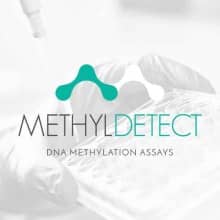See answers to your viral application questions from the Oz Biosciences team
Transduction Reagents
1. How are ViroMag, ViroMag R/L, and AdenoMag different?
ViroMag was the first viral reagent to be developed. It was designed to be a generic reagent, meaning that it is compatible with any kind of viral particle (lentivirus, retrovirus, adenovirus etc.). Its composition, charge, and size was therefore not optimized to a particular virus type. Later, two reagents dedicated to retro/lentiviruses (ViroMag R/L) and to Adenoviruses (AdenoMag) were developed. Their compositions are totally different as they were designed to specifically enhance the desired virus specie transduction capacities.
2. Where do the magnetic nanoparticles go after being delivered into the cells?
The magnetic nanoparticles bind to the viruses by electrostatic and hydrophobic interactions. Then, upon application of the magnetic field, the nanoparticles are attracted towards the field and thus concentrate the virus onto the cells' surface. Nanoparticles enter the cells by endocytosis and the virus infects the cells. The magnetic nanoparticles are therefore inside the cells after Magnetofection.These nanoparticles are biodegradable and we can observe the nanoparticles into cells up to 96 hours after Magnetofection. At the beginning, they can be seen in endosomes cytoplasm and even the nucleus. Thereafter, they are visible in sequested vesicles. They then disappear either by excretion or degradation. They are not toxic for the cells. No reports have been published to indicate an effect on the cell's biology. Many publications showed that the cell's physiology appears to be unmodified.
3. Is ViroMag suitable for viral vector sizes of 16-20 kb?
Definitively yes. In theory, there is no viral size limitation for ViroMag to be efficient. The binding of magnetic nanoparticles and viral particles goes through electrostatic and hydrophobic interactions. The only limitation is the necessity to raise the volume of ViroMag reagent in order to efficiently capture all the viral particles.
4. Is ViroMag suitable for co-transduction of 2-3 viral vector of 16-20 kb sizes?
Yes, ViroMag is suitable for co-transfection. As the interactions are not specific (such as with antibodies for example), any viral particle can bind to the magnetic nanoparticles. Thus, if you use two different kinds of viruses in the same solution, they will have the same capacity to bind magnetic nanoparticles. The size shouldn’t matter if enough ViroMag is present.
5. Is ViroMag suitable for both in vivo and in vitro transduction?
No. ViroMag is not recommended for in vivo use. There is a seperate “in vivo ViroMag” dedicated to in vivo experiments.
Mag4C
1. Can one use the "regular" magnetic plate we purchased for the concentration of viruses with Mag4C kits?
Definitively yes. The magnetic beads composing the Mag4C kits are compatible with the magnetic field produced by the regular magnetic plates. However, having a magnetic separation rack that is more convenient for handling large samples (up to 50mL) or performing parallel captures (it can accomodate 12 standard microtubes) would be beneficial.
2. Are the beads re-usable and, if yes, how many times?
Unfortunately, the beads are not re-usable.
3. Can we use the kits for capturing / concentrating HIV and HCV viruses not from cell media, but from clinical samples, like whole blood, serum or plasma?
In theory, the capture and concentration of viral particles can be performed in clinical samples. Nevertheless, as the capture process is based on non-specific interactions, other biological components can also interact with the beads, reducing the efficiency. It is important to note that it is not a purification process. Using higher reagent volume and/or diluting sample in PBS or salt-balanced medium should improve the efficiency.
4. What is the basis of the virus capture with the Mag4c-Ad Kit? Do special envelope/coat vectors need to be used?
Magnetic beads bind to viral particles through electrostatic interactions and a strong magnet holds the magnetized particles while the supernatant (free of viral particles) is removed. No special envelope/coat vector is needed.
5. How many viruses can bind to one magnetic bead?
It is recommended to use 20 µL of Mag4C reagent per 10e6 viral particles; but this will be dependent on many parameters, such as the medium composition, and most importantly the ratio of active particles/total particles. It is best to start with the recommended volumes from the protocol and to adjust the quantity if the capture is too low: an easy way to check is to test if virus is still present in the supernatant after performing the capture with Mag4C.
6. Can I use the Mag4C reagent to transduce cells after capturing the virus, or do I need to purchase another Magnetofection reagent?
Mag4C is a “one size fits all” kit. If you want to capture and concentrate your virus and then use the magnetic viral particles to transduce cells, then Mag4C is suitable for this purpose. Once the viral particles are captured and concentrated, remove the supernatant, and re-suspend the pellet into a smaller volume (to concentrate) of medium without supplement and add the suspension directly to the cell culture. At this stage, a magnetic plate will be needed to attract the magnetic viral particles onto the cell surface.



